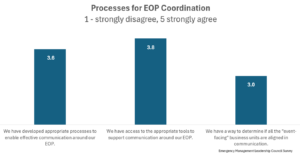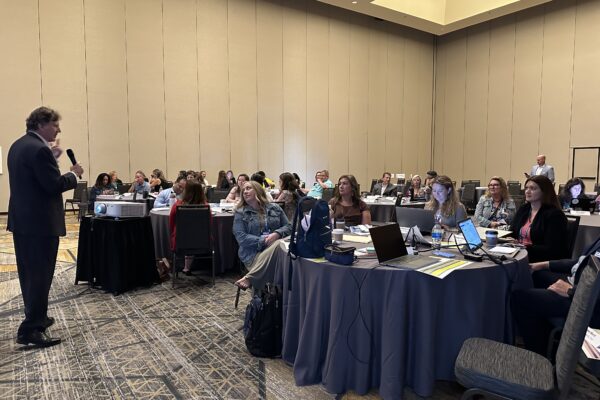Essential Guidelines to Optimize Utility Emergency Management Programs
Chartwell’s Emergency Management Leadership Council is publishing a monthly series of high-level guidelines to help utilities strengthen their emergency management (EM) programs from the ground up. These guidelines are based on ongoing collaboration among member utilities.
Council members identified Business Unit Alignment as a critical component of EM preparation and completed the first Guideline document, “Building EOP Awareness.” They next moved on to develop best practices guidelines for “Building an Emergency Management Team” in March. Key takeaways from the Guideline documents are below.

The first two volumes are now available:
Guideline No. 1: Building EOP Awareness focuses on making the Emergency Operations Plan a living, actionable framework through clear roles, document control, and structured exercises. Key takeaways covered in this Best Practice Guideline include:
- Building EOP Awareness Across IMTs: Ensure all IMT members understand their responsibilities, the organizational structure, and how the EOP integrates with emergency preparedness efforts.
- Documenting Control and Continuous Improvement: Establish a formal document control process, maintain a single master version, and systematically update the EOP based on After-Action Reports (AARs) and regulatory changes.
- Using Exercise Tools to Build Awareness: Apply FEMA’s HSEEP framework, progressing from discussions to full-scale exercises to validate and enhance IMT readiness.
- Tracking Lessons Learned and Institutionalizing Change: Implement structured debriefings, assign action items with clear ownership, and maintain a revision history to ensure institutional knowledge is preserved.
Guideline No. 2: Building an Emergency Management Team explores how to structure, train, and sustain cross-functional Incident Management Teams (IMTs) capable of leading under pressure. Key takeaways covered in this Best Practice Guideline include:
- Incident Commander Selection: The Incident Commander (IC), typically a senior leader with delegated authority from the CEO or President, must have the experience and decision-making ability to set incident objectives and strategies.
- Building a Skilled IMT: IMT members must have leadership experience within their respective functional areas and receive structured training tailored to emergency response.
- Training and Exercises: Competency in emergency roles is achieved through structured training programs and exercises, such as tabletop discussions, functional drills, and full-scale simulations that reinforce knowledge and build ‘muscle memory.’
- Continuous Improvement: Debriefings, After-Action Reports (AARs), and Improvement Plans (IPs) are crucial for capturing lessons learned, refining emergency response protocols, and helping IMT members consistently enhance their effectiveness.
- Sustained Engagement: Regular IMT meetings facilitate cross-functional collaboration, maintain ongoing situational awareness, and monitor progress on training, exercises, and improvement initiatives.
Each document is built on insights from utility EM professionals across North America and offers practical strategies executives, practitioners, and support staff can use to improve readiness.
Together, these guidelines offer a step-by-step roadmap for building a more resilient utility – starting with awareness and ending with action.
Emergency Management Leadership Council members can download the monthly guidelines here in the Member Portal. If you want to learn more about membership, please get in touch with Tim Herrick.





